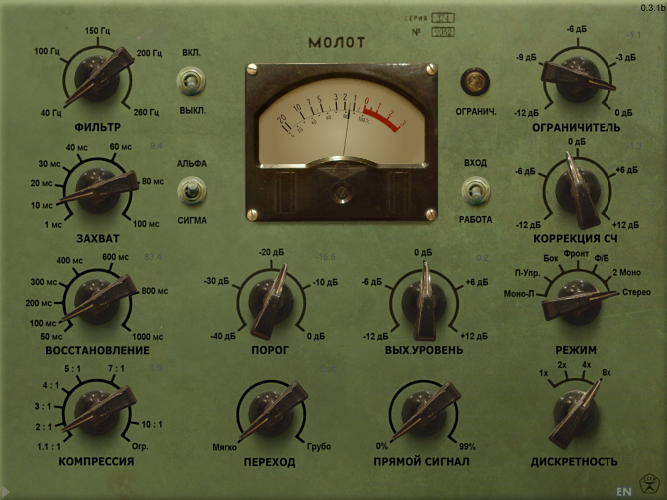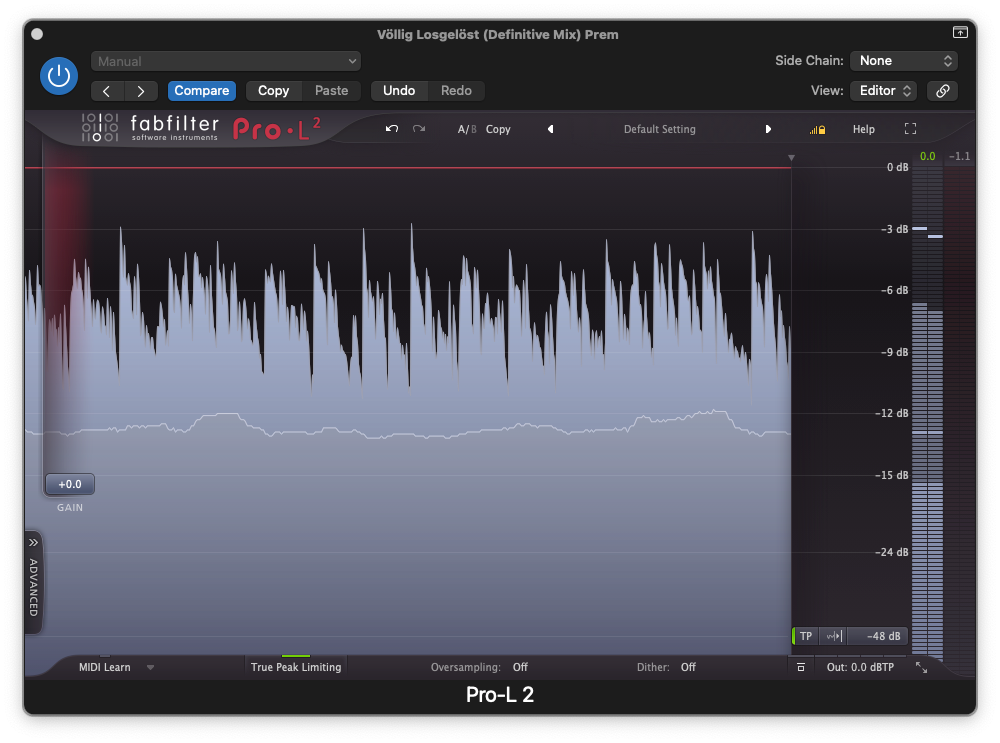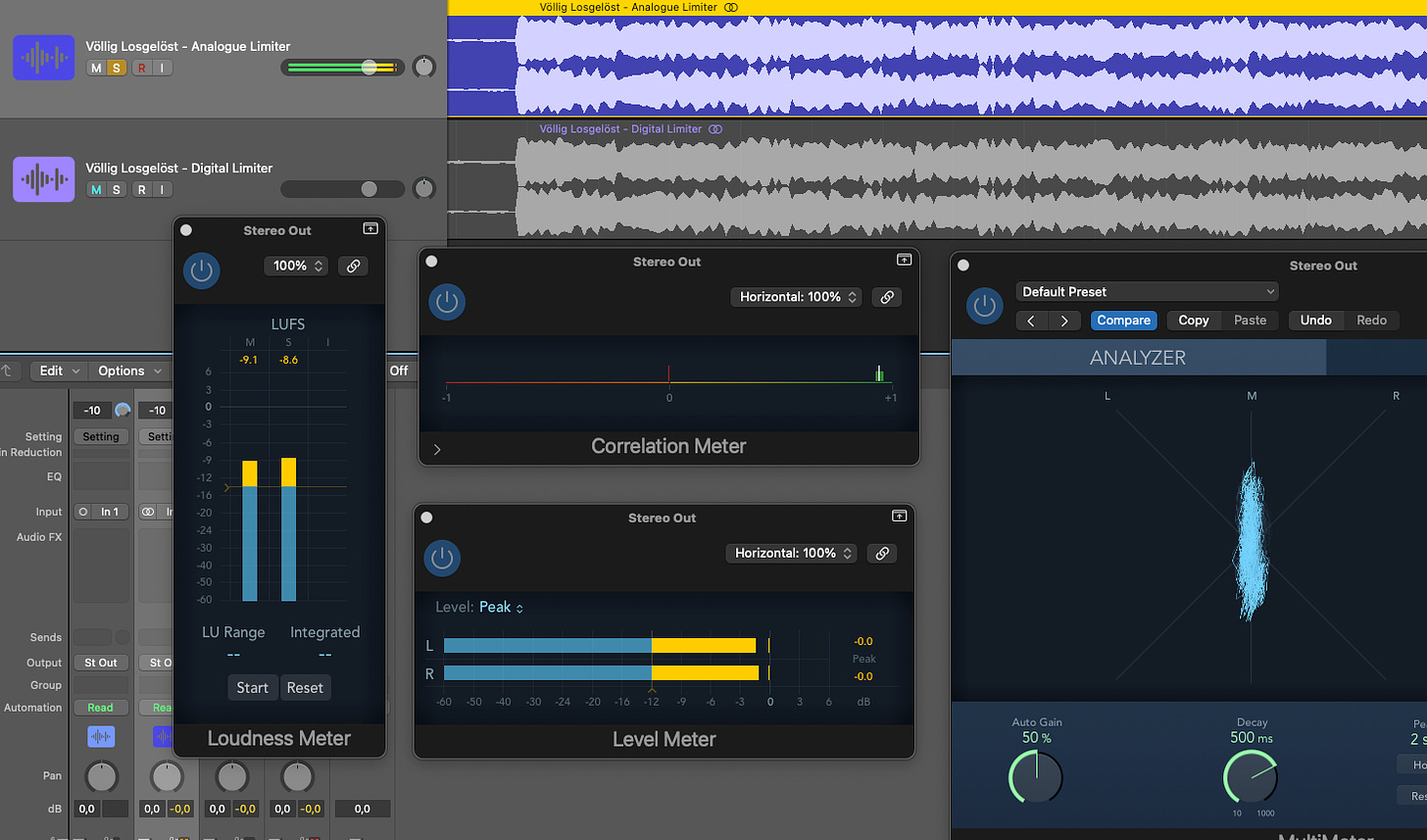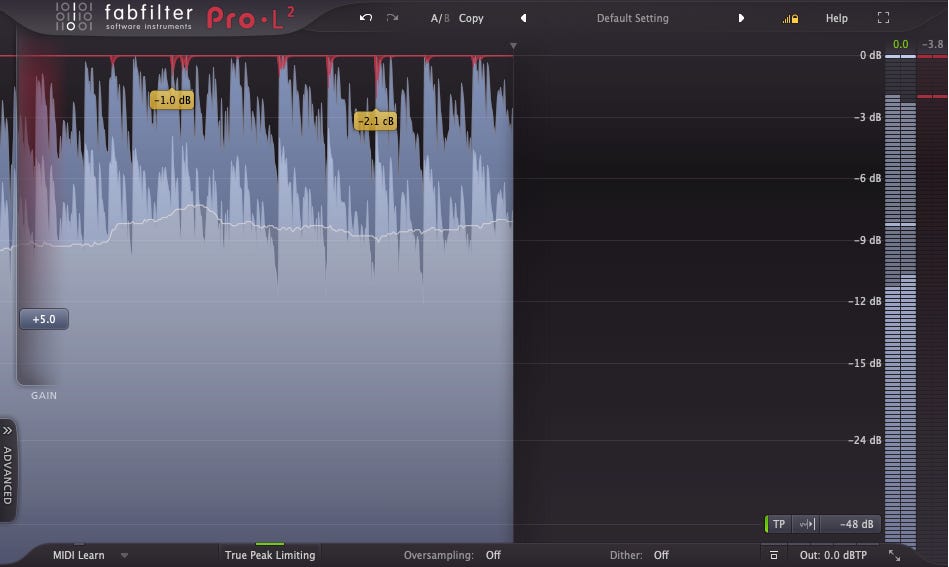The difference between digital and analogue mastering limiter
Is analogue always better, does it even compare, or can you even hear the difference yourself? Because I can, and I'll explain to you what it's about.
Tools, tools, tools. We music producers should be so grateful to have so much built and developed for us to use, that I believe since the first times I started crafting sounds to now, I learnt how to shape even the slightest of frequency thanks to lots of hard work by the Logic Pro developers, but also my eagerness to learn dubbing appropriately with full passion ahead.
Not having expensive monitoring never stopped me from aiming towards making music, I just used whatever I had in the past. Since a teenager it was my one of my dreams to own a good hi-fi (afterwards studio monitors) setup, however that took time. From my first Intelligence of Dawn drum and bass album in 2010s to my latest tunes there’s a difference. From the analogue limiter to the digital one there’s a difference. Heck, if we even have the same model of the AKG K240 headphones there will be slight difference between the two… however, let’s not get stuck in audiophile snakes oil and focus on what’s important for today’s comparison.
First, before the limiter got to the chain the premaster went through a preamp, compression - both digital as Molot is my Swiss knife tool for shaping pre masters quickly without losing any quality, and after saturating the result in a tape machine, I use an analogue compressor and at the end of the chain comes the limiter.

Molot takes care of my transients, it shapes everything correctly to the original sound source and it truly compresses the premaster without too much hassle, however it leaves me much more to work afterwards with my analogue gear.
Now, for this instance and this article I’m explaining my gear chain. Just to let you know, I used the same preamplifier, tape machine and additional analogue compressor before ending up with a second pre master as I want to call it, the one that actually matters and has very few decibels and juice to squeeze out, as if you’re gonna overcook it (non-intentionally) it’s going to flatten your dynamics, and no matter what sort of sound you’re after, an over-cooked premaster before feeding it to the final limiter is something that you’re going to be crying for doing afterwards.
After my final analogue gear chain, I was left with my final premaster. It had sitting around 4-5 decibels of headroom with few spikes here and there that both the Pro-L 2 by Fabfilter and the beautiful Bettermaker Mastering Limiter shouldn’t have any issues with.
This isn’t a screenshot from the session I bounced, for that one I used the highest quality settings possible, however for visual reference it looked something like this. I decided to go and do A/B with the analogue Bettermaker, and also set it up on +5db gain, and the results I received show the real difference between analogue and digital.

On this playlist above, both WAVs are uploaded so you can compare them yourself with download enabled settings.
When comparing the two out of eye-sight, you realise that the digital fabfilter master looks a bit beefier, however when analysing it with the Logic Pro metering utilities the numbers show that despite the limiter being set up on a very safe +db range (and equal to its analogue brother) it compresses and furthermore distorts the sound in regions where most of the sounds are blending together.
For example on this tune in particular, I used a slow entry method where elements gather one by one, however after the second half it starts to get a bit chaotic. With the Bettermaker on the same setting as the Fabfilter, you can listen for yourself that despite sounding perhaps a tiny bit, just a tiny bit quieter - that’s the case because it doesn’t overcompress and it limits the premaster that’s being sent to it properly, and when the choking point on the end comes and the techno kick enters it manages to not destroy the whole formation of the track apart and keep it glued together.
The fabfilter, exported with the highest settings available does the job fine for a digital limiter, however it shows that a piece of gear made only to do one job does the job differently. Of course, if I hadn’t had the Bettermaker, the Fabfilter or other software limiters perhaps with other settings would’ve gave me equally satisfying results. However, when the extreme sonic come to question, especially all tunes that I’ve used lots of distortion and needed lots of control at the low-end, analogue gear and saturation always sounds steps ahead.

On your monitoring gear, preferably headphones - just add both WAVs into your DAW and do A/B testing what you’ll hear won’t be like night and day, but when you’re reading the words straight from the author himself explaining what he hears, you might as well listen to the difference I’m explaining here. In both LUFS loudness the analogue beats the digital as it is more dynamic and despite this tune in particular sounding chaotic, I wasn’t honestly chasing the loudness war with it, and both reach the same peak of 0, so then there it is on paper, the final conclusion.
Is analogue better than digital? Well, I see it like this. It is different. When you have an analogue limiter made only to do that job, it does the job on a completely different way than the digital one does. You have a unit with hardware elements that work in cohesion to give you an output that you listen to at the end. All of this is frequency manipulation and in most cases you will hear cleaner and more dynamic output out of the analogue limiters.
The digital limiters aren’t bad, the Fabfilter stays good and strong but sadly falls behind when you’re comparing it to the Bettermaker. Although, like I mentioned before, with other settings and more dynamics with lesser limiting gain, you can end up with equally satisfying results that will still have the tune dynamic stick together and not have your whole sonic soundscape fall apart.
Keep in mind that all the distortions that you’re listening on this tune were pre-bounced on the first premaster. It is an artistic choice, and I’m very happy to be able to give you this little technical demonstration and comparison between the two, so you can hear for yourself how distortion, dynamics and limiting at the final end of the chain sounds for the listener.
I hope you enjoyed the comparison and learn to never fight on which is better: Use what fits you the most depending on the scenario. If you have analogue, it’s a no-brainer, but not having it doesn’t leave you in a position where you cannot bounce professional sounding masters.
When we’re at limiters, what limiters do you use for your mastering chain? Which is your favourite one and why? Let me know in the comments or replying on the email.
Until the next one,
Andrijan






Only to correct some mistakes I've written:
The pre-master went into an analogue pre-amplifier, more correctly a Neve 1084 and neither does the analogue or digital master reach 0db peaks. My mistake about that, they both remain at around -5 to -3db real peaks and they verge around -13LUFS for this one in particular. Temporare peaks are something else, I am talking about true peaks. Both are very similar, but take a listen for yourself and make your conclusion: Which one do you like better?